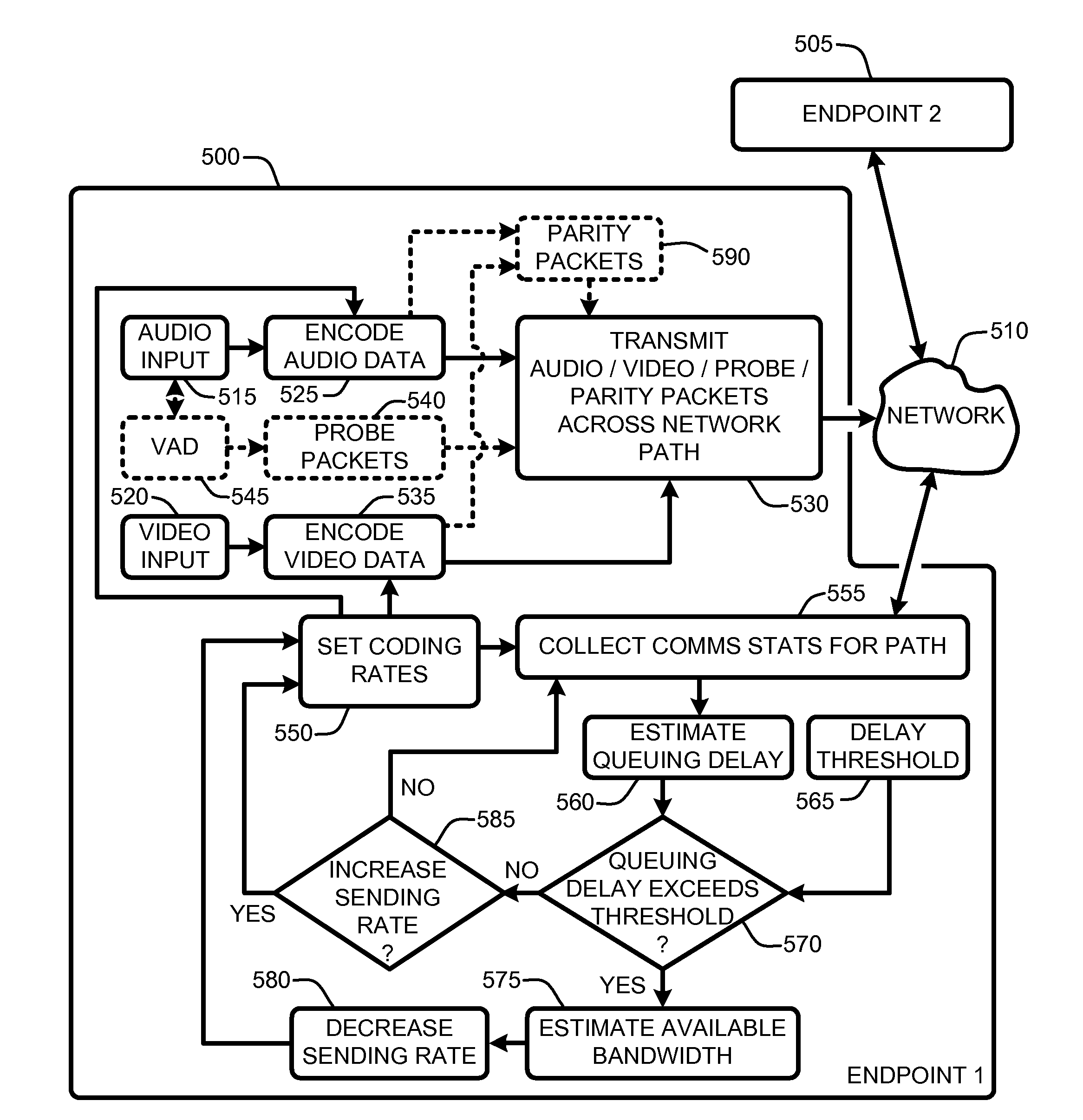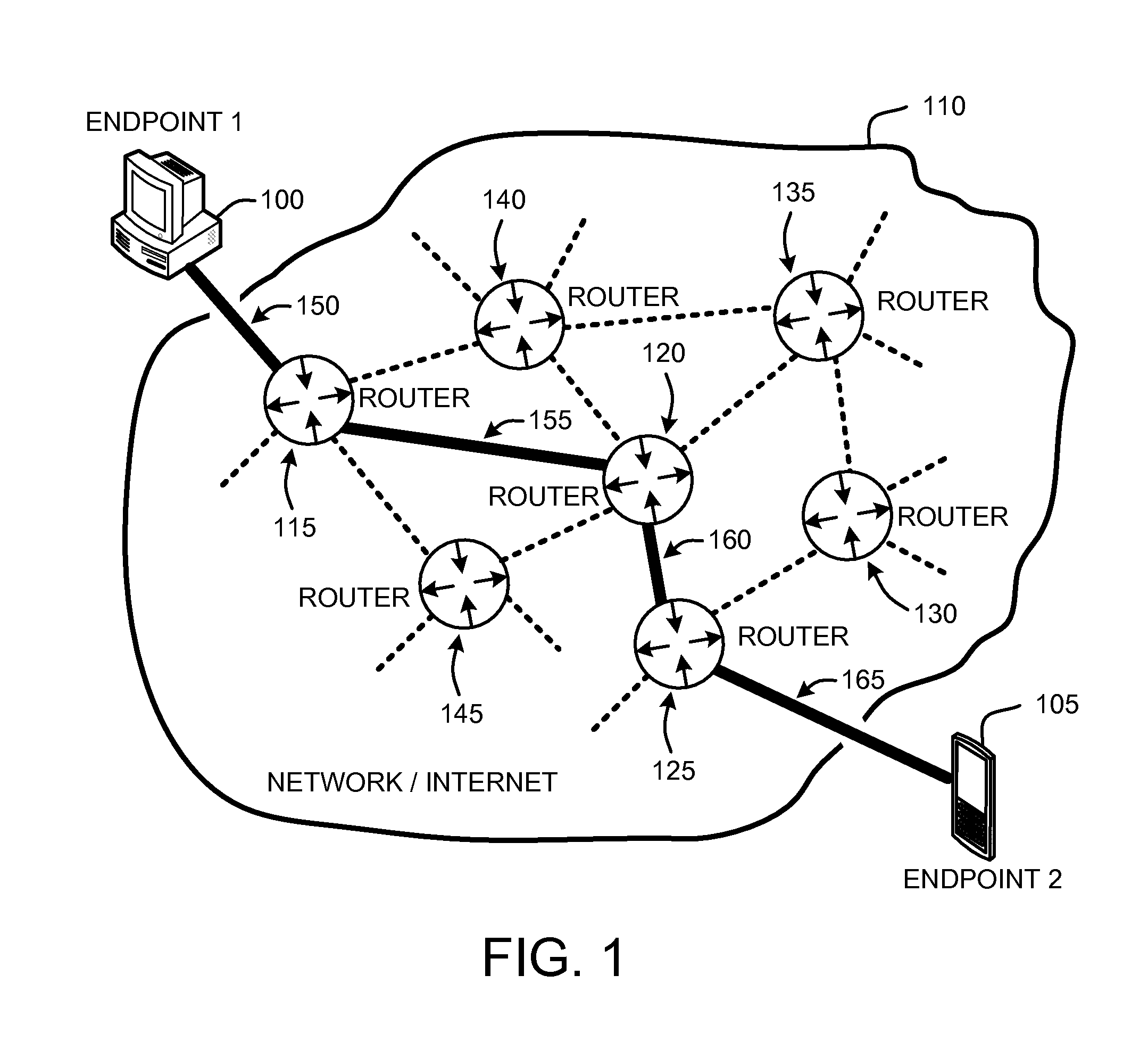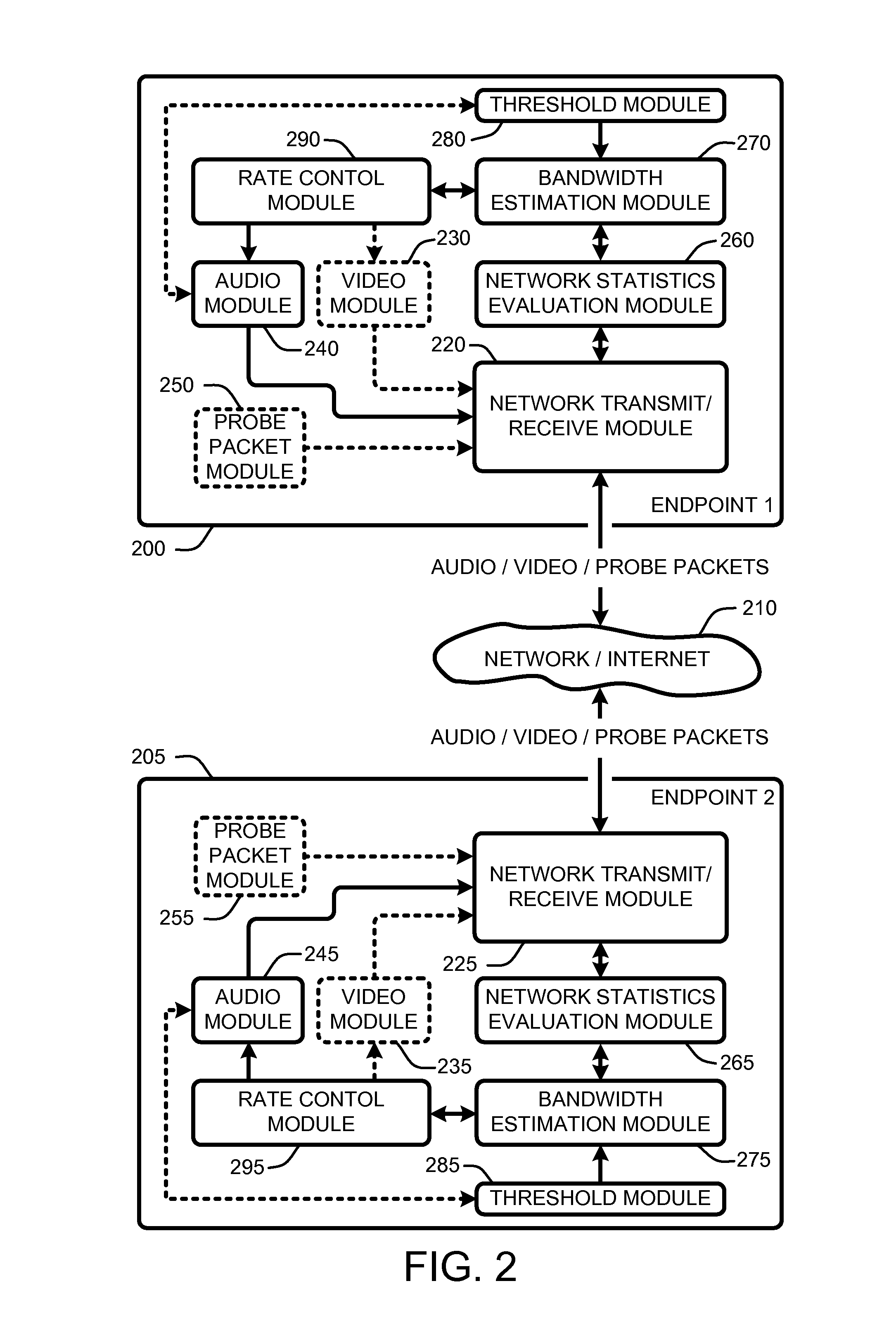Application aware rate control
a technology of application aware rate control and rate estimation, which is applied in the field of insession bandwidth estimation and rate control, can solve the problems of difficult to obtain or verify knowledge of tight link bandwidth capacity in multi-hop path in real-world data transmission scenarios, and relative slow bandwidth estimation that is unsuitable for real-time communications, so as to maximize the quality of real-time communication and maximize the use of available bandwidth. , the effect of maximizing the quality of conferencing
- Summary
- Abstract
- Description
- Claims
- Application Information
AI Technical Summary
Benefits of technology
Problems solved by technology
Method used
Image
Examples
Embodiment Construction
[0020]In the following description of the preferred embodiments of the present invention, reference is made to the accompanying drawings, which form a part hereof, and in which is shown by way of illustration specific embodiments in which the invention may be practiced. It is understood that other embodiments may be utilized and structural changes may be made without departing from the scope of the present invention.
1.0 Introduction
[0021]In general, a “communications rate controller,” as described herein, provides various techniques for enabling application aware rate control for real-time communications (RTC) scenarios over multi-hop networks such as, for example, the Internet. Examples of RTC scenarios include, for example, audio and / or video broadcasts, conferencing between endpoints, and terminal service sessions. The various rate control techniques enabled by the communications rate controller are used to maximize RTC quality by dynamically varying sending bandwidth from a send...
PUM
 Login to View More
Login to View More Abstract
Description
Claims
Application Information
 Login to View More
Login to View More - R&D
- Intellectual Property
- Life Sciences
- Materials
- Tech Scout
- Unparalleled Data Quality
- Higher Quality Content
- 60% Fewer Hallucinations
Browse by: Latest US Patents, China's latest patents, Technical Efficacy Thesaurus, Application Domain, Technology Topic, Popular Technical Reports.
© 2025 PatSnap. All rights reserved.Legal|Privacy policy|Modern Slavery Act Transparency Statement|Sitemap|About US| Contact US: help@patsnap.com



